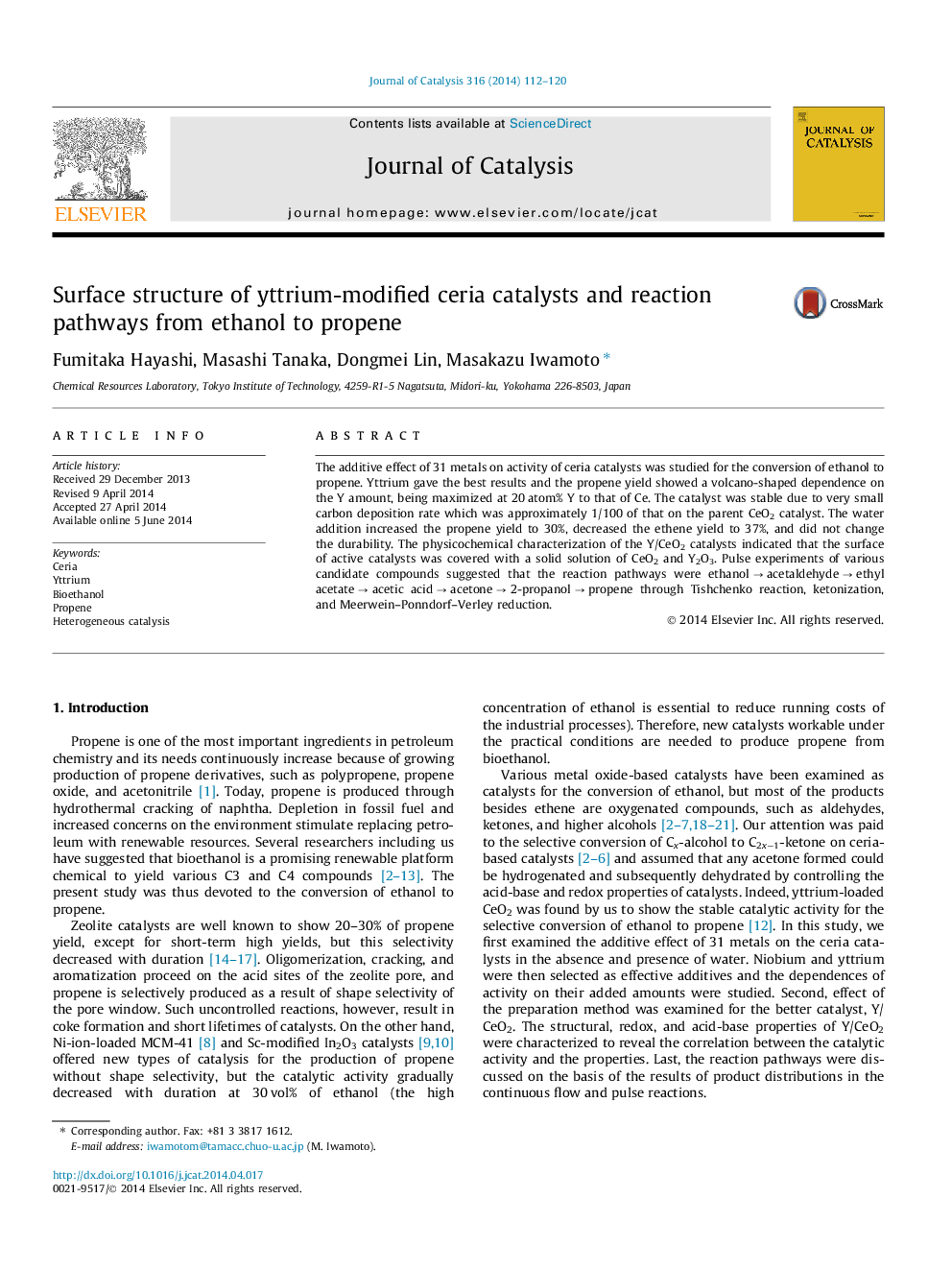| Article ID | Journal | Published Year | Pages | File Type |
|---|---|---|---|---|
| 60970 | Journal of Catalysis | 2014 | 9 Pages |
•Propene was stably produced from ethanol in good yields on 20 atom% Y/CeO2.•Carbon deposition rate on Y/CeO2 was ∼1/100 of that on zeolites.•Yttrium and cerium generated a surface solid solution.•Reaction pathways were suggested to be ethanol → acetaldehyde → ethyl acetate → acetic acid → acetone → 2-propanol → propene.
The additive effect of 31 metals on activity of ceria catalysts was studied for the conversion of ethanol to propene. Yttrium gave the best results and the propene yield showed a volcano-shaped dependence on the Y amount, being maximized at 20 atom% Y to that of Ce. The catalyst was stable due to very small carbon deposition rate which was approximately 1/100 of that on the parent CeO2 catalyst. The water addition increased the propene yield to 30%, decreased the ethene yield to 37%, and did not change the durability. The physicochemical characterization of the Y/CeO2 catalysts indicated that the surface of active catalysts was covered with a solid solution of CeO2 and Y2O3. Pulse experiments of various candidate compounds suggested that the reaction pathways were ethanol → acetaldehyde → ethyl acetate → acetic acid → acetone → 2-propanol → propene through Tishchenko reaction, ketonization, and Meerwein–Ponndorf–Verley reduction.
Graphical abstractFigure optionsDownload full-size imageDownload high-quality image (217 K)Download as PowerPoint slide
